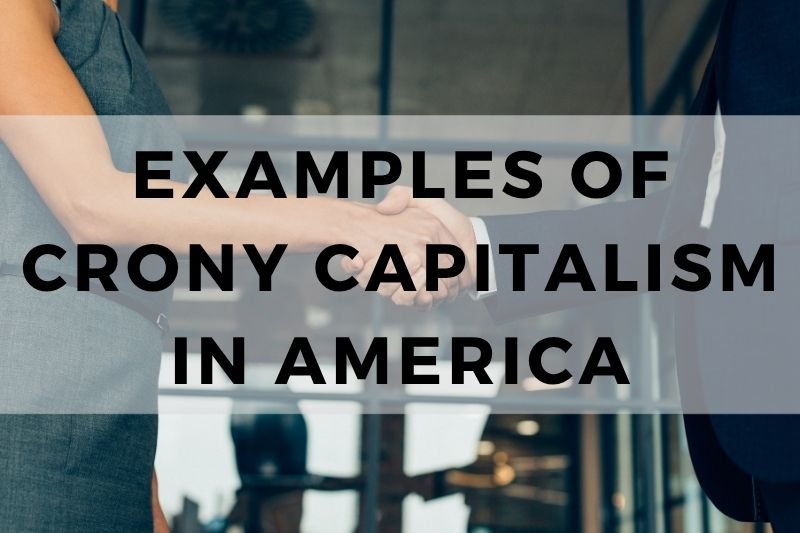
What happens when capitalism stops rewarding innovation and starts protecting insiders? In America, this troubling shift has given rise to crony capitalism—a system where success is determined not by competition or value creation, but by political connections and favoritism. Rather than serving the public good, government policies and corporate lobbying often intertwine to benefit a powerful few. From subsidized monopolies to bailouts and regulatory loopholes, crony capitalism distorts markets and undermines trust. This article explores some of the most shocking examples of crony capitalism in America, revealing how deeply entrenched and far-reaching these practices have become.
Introducing Crony Capitalism in America
What Is Crony Capitalism?
Crony capitalism is when businesses gain advantage through political connections instead of market competition. It involves favoritism in the form of tax breaks, subsidies, regulatory loopholes, or government contracts. Instead of innovating or improving services, companies thrive by influencing politicians. This undermines free markets and creates unfair advantages for select corporations. It also distorts resource allocation and reduces economic efficiency. Small businesses and startups suffer because they cannot compete on equal terms. In extreme cases, crony capitalism leads to systemic corruption. Public trust erodes as citizens see profits going to the well-connected rather than the most capable. This model encourages rent-seeking behavior, where success depends on lobbying rather than productivity.
Historical Origins of Crony Capitalism in America
Crony capitalism in America can be traced back to the 19th-century rise of railroad monopolies and government favoritism. The federal government granted land and subsidies to railroad tycoons, helping them dominate the transportation sector. These powerful entities influenced legislation and received protection from competition. The Gilded Age saw similar trends with banking and steel, as elites used political leverage to suppress rivals. Political machines and business moguls became tightly linked. Later, New Deal programs created new alliances between federal agencies and corporations. By the mid-20th century, crony practices were embedded in sectors like defense and energy. These historical patterns laid the foundation for ongoing state-corporate partnerships that persist today.
20th Century Examples of Crony Capitalism in America
The Military-Industrial Complex
The military-industrial complex shows how defense contractors gained massive profits through political favoritism. After World War II, the U.S. defense sector became deeply tied to government spending. Companies like Lockheed Martin, Raytheon, and Boeing secured long-term contracts with little competition. Politicians supported excessive defense budgets, often influenced by campaign donations and lobbying from defense firms. Military bases and projects were intentionally spread across districts to ensure bipartisan backing. This system encouraged constant military engagement and overspending. Government officials often transitioned to high-paying jobs in defense corporations. The result was an entrenched loop of political and corporate self-interest, draining public funds and prioritizing profit over national strategy or fiscal responsibility.
The Savings and Loan Crisis
The savings and loan crisis revealed how deregulation and political influence led to massive taxpayer bailouts. In the 1980s, lawmakers relaxed regulations on savings and loan institutions. Banks began engaging in risky investments while political donors received favorable treatment. When the market collapsed, more than 1,000 institutions failed. Yet instead of facing consequences, many connected executives were shielded from full accountability. Taxpayers absorbed over $100 billion in bailout costs. Politicians who supported deregulation often had close ties to the industry. The crisis exposed how political lobbying can dismantle oversight, creating instability. It marked a turning point in public awareness about financial cronyism and the social cost of corporate-government alliances.
Big Tobacco and Political Protection
Big Tobacco thrived for decades through deep political lobbying and regulatory manipulation. Despite overwhelming evidence linking cigarettes to cancer, tobacco companies delayed regulation by influencing lawmakers and funding misleading research. Executives testified falsely under oath, yet faced minimal legal consequences. Political donations from tobacco firms bought silence and weak enforcement. The industry targeted vulnerable groups through advertising while avoiding restrictions. Even after the 1998 Master Settlement Agreement, tobacco companies retained significant influence. They shaped public policy to limit taxation and prevent aggressive anti-smoking campaigns. This example illustrates how well-funded industries can obstruct public health protections for profit, using government access as a shield against accountability.
Final Thoughts
Crony capitalism undermines the very foundation of a free market economy. When government and corporate interests become too closely aligned, competition suffers, innovation slows, and public trust erodes. The examples from 20th-century America reveal how deeply embedded these practices can become and the lasting harm they cause. From defense contractors to financial institutions and tobacco giants, each case shows the cost of prioritizing political access over market fairness. Recognizing and addressing cronyism is essential to restoring economic integrity. A transparent system that rewards value—not influence—remains the only path toward sustainable and equitable growth in a democratic society.
